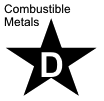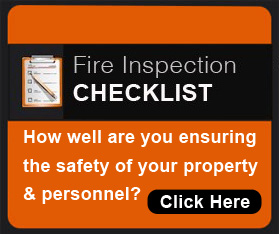 A small fire, if left unchecked, can easily and quickly spread out of control. Fire extinguishers are one of the most critical pieces of safety equipment that a business owner or property manager can have in the workplace to prevent the spread of fire and protect both property and lives.
A small fire, if left unchecked, can easily and quickly spread out of control. Fire extinguishers are one of the most critical pieces of safety equipment that a business owner or property manager can have in the workplace to prevent the spread of fire and protect both property and lives.
But, it takes more than simply buying an extinguisher, stuffing it in a cabinet or maintenance closet and hoping that you or one of your staff will never need to use it. In order for a fire extinguisher to be most effective, it must be the right type for the job, located in a convenient place, kept in good working order and used by someone who has been well-trained. Understanding all of these details can be one of the best possible investments in workplace safety.
Workplace Fire Extinguisher Selection and Placement
There are four distinct classes of fire, each of which has a specific type of fire extinguisher. The different classes include:
 |
This includes fires that begin with wood, fabric, paper and similar products. |
 |
Fires that begin with oil, gasoline, paint, grease or other flammable liquids. |
 |
Includes fires started with wiring, conductors and electrical sources |
 |
This is a less-common type of fire that originates from certain metals like sodium or magnesium. |
Since each of these fires requires a different type of extinguisher, it is important that an organization considers what type of fire is likely to occur when purchasing extinguishers.
Placement is also very important. Placing extinguishers where they are visible and can be accessed quickly can save precious moments in case of an emergency.
Workplace Fire Extinguisher Maintenance
Another important consideration when it comes to fire extinguishers in the workplace is maintenance. Proper maintenance includes regular (monthly) inspections, recharging and an annual checkup and service. Keeping proper records assures that all work is carried out as per the NFPA Ontario fire code regulations. Employees in an organization can conduct the monthly inspection, but yearly testing and servicing is normally conducted by a trained professional or fire protection company.
Workplace Fire Extinguisher Training
Finally, in order to get the best possible protection from fire extinguishers in the workplace, it is vital that employees are properly trained in the proper use of the equipment. This includes making sure staff members not only understand how the equipment is used, but also that they know what type of fires on which the extinguishers work. This information should be reviewed regularly and shared with all new employees to make certain everyone is prepared in case of an emergency.
When a workplace is equipped with well-selected and maintained fire extinguishers and the staff is trained in their proper usage, there is improved defense in case of a fire. Spending a little extra time and effort on fire extinguishers in the workplace can make a huge difference in the level of fire protection and dramatically improves the potential to save property and lives.

